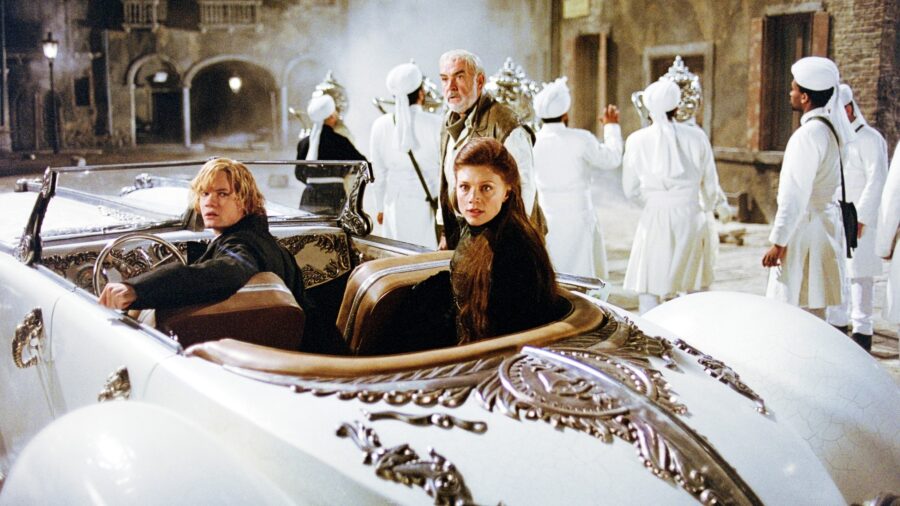[ad_1]
By Jonathan Klotz
| Printed
Science fiction goes via a contemporary renaissance because of the rise of high-concept sci-fi streaming sequence like Silo, Three-Physique Drawback, and Basis, however probably the most standard and most creative sub-genres has been left within the mud, with no main films or reveals launched within the final 5 years. Steampunk, the retrofuturistic and anachronistic style of steam-powered innovations, historic fiction, and often a smattering of thriller and horror, has been tossed into the dustbin of historical past. Regardless of the dearth of curiosity from Hollywood, followers are nonetheless going to devoted conventions and exhibiting off wonderful outfits on social media, so what went improper?
The Sudden Rise And Fall Of Steampunk

Steampunk was coined after the rise of cyberpunk within the Nineteen Eighties, but it surely has its roots again within the Nineteen Fifties film variations of traditional sci-fi novels, together with 20,000 Leagues Underneath the Sea, The Time Machine, and Journey to the Heart of the Earth. Dr. Who’s Daleks and Wild Wild West introduced the style to tv, proving that combining Victorian London with steam-based know-how was a profitable method. It captured the creativeness of sci-fi followers who embraced the massive overcoats, tall hats, and abundance of goggles as a brand new wave of vogue for science fiction conventions.
Quickly, there have been steampunk novels, corresponding to The Distinction Engine by William Gibson, and even graphic novels, together with Hellboy and The League of Extraordinary Gents, whereas Robert Downey Jr’s Sherlock Holmes movies helped take steampunk into the again half of the aughts. Even anime dipped its toes into the style, with Kabaneri of the Iron Fortress and Fullmetal Alchemist totally embracing the look, really feel, and even sound of steampunk. We didn’t realize it on the time, however that’s nearly as good because it was going to get for the style.
Why Hollywood Saved Failing

In 2018, the big-screen adaptation of Mortal Engines arrived in theaters, bringing to life the wild post-apocalyptic story of cities on wheels, but it surely didn’t simply flop; it misplaced a lot cash, an estimated $190 million, that Hollywood has not touched steampunk since. The closest we’ve had since is Poor Issues, a twist on the traditional story of Frankenstein, however even that’s extra of a gothic horror. In literature, it’s been the same story, with no steampunk novels breaking via within the final six years the way in which Worldshaker or The Unusual Affair of Spring-Heeled Jack did within the late aughts.
The issue with steampunk is that it’s such a visually intense style, and creating the sensation of a dwelling, respiration world is tough to do on a price range. It’s straightforward in literature when gifted writers can paint photos utilizing nothing however phrases and weave a wildly creative story with out concern for a way costly it will be to depict a two-ton steam-powered cannon in reside motion. Even in anime, as Kabaneri reveals, essentially the most primary of scenes turn into visually intense when there are numerous transferring gears and pipes filling up the background.
Past the price of bringing steampunk to life is the problem of explaining the intricate settings within the span of a 2-hour movie. Embracing alternate historical past and retrofuturistic know-how could make the style a success with sci-fi followers, but it surely’s often too dense to rely as senseless leisure and typical plots can rapidly get very complicated for the common movie-going viewers. Even films just like the 2011 Three Musketeers, which layered steampunk trappings on the traditional story, get dragged on assessment websites for complicated plots.
The Future Of Steampunk

If steampunk can’t catch on with Hollywood studios, it’s no marvel that so many traditional sci-fi authors like E.E. Doc Smith, the daddy of area opera, have by no means been tailored. With intricate visuals and sophisticated plots, followers can’t belief studios that battle to convey essentially the most generic of sci-fi to life and must look elsewhere for the way forward for the style by going again to the place it began: novels. Authors like Jennifer Haskin (The Clockwork Pen) and Dan Willis (Pound of Flesh) are among the many many retaining the style alive within the one medium that also lets imaginations run wild, creativity can flourish, and characters can put on large goggles and funky dusters whereas placing the ending touches on a steam-powered airship.
[ad_2]
Source link
